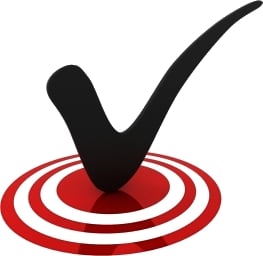In the November 12, 2013 Ask The Headhunter Newsletter, a reader asks about outplacement:
My company is downsizing and I know I’m going to get cut. HR tells us they’re going to give us help finding a job from a top firm that specializes in this. What do you think of outplacement?
Nick’s Reply
When you get fired, outplacement is often the consolation prize. The employer spends 10 or 15 grand to help the employee “transition” (that’s used as a verb, so help me) and the gullible departee is grateful that someone is going to find her a job.
 Now read my lips: Outplacement might extend your unemployment rather than help you land a new job. So take ownership of your status, and maybe put some extra cash in your pocket. Here’s how.
Now read my lips: Outplacement might extend your unemployment rather than help you land a new job. So take ownership of your status, and maybe put some extra cash in your pocket. Here’s how.
Some years ago, when AT&T was doing a big downsizing, I got a call asking if I’d like to help with outplacement. I explained that I don’t scale — I can’t coach 5,000 people into new jobs because I don’t think anyone can do that. No, no, no, they said — you’ll be working with just a handful of managers who really need your help. So I took the gig.
The handful of managers comprised the career development team — that branch of the human resources department responsible for outsourcing “transition assistance” for 14,000 employees to a bunch of huge outplacement firms at a cost of $15,000 per person.
But the career development team didn’t want to go sit in cubicles with thousands of other newly minted job hunters. They wanted something better. They wanted highly customized help. Now, this was a huge feather in my cap. I represented “something better,” and I was proud of it. I did a good job helping every single one of them land in new jobs, and I got paid well.
But the point of this story is that the HR exec who hired me explained that outplacement isn’t so much for the departing employee. It’s mostly for the legal protection of the employer. I’ll over-dramatize how it plays out in court:
Downsized employee: “Your Honor, after 20 years on the job, they cast me out on the street!”
Judge: “Did they give you expensive outplacement services to help you find a new job?”
Employee: “Well, yes. They spent 15 grand on Transition Gurus, Inc. to help me, but they never found me a job.”
Judge: “Fifteen grand on a big-name company like Transition Gurus?! Why, they gave you the best! No matter that it didn’t work. No company ever got sued successfully for retaining Transition Gurus, Inc. Case closed! Next!”
While there are some boutique outplacement firms that do good work, the outplacement industry is dominated by a few big players that process the downsized like cattle. Make sure you know what you’re getting into.
Here’s how big-time outplacement often “works”:
- You don’t choose the outplacement firm or the counselor you work with. Your employer does. So from the start, you’re in the back seat of this adventure.
- The outplacement firm works for your employer, not for you. The firm’s job is to get you out of your employer’s hair, keep you busy, and make you feel like someone’s going to get you a job so you won’t sue your employer for wrongful termination. Outplacement is mostly about the company’s liability, not your future.
- Outplacement firms earn more money when you don’t find a job. Say what? Just what I said. Some of these firms drag out the process to milk the client for more fees, and to make it look like their “process” is thorough. Many programs are boilerplate presentations conducted by lightweight trainers. In some cases, they’ll talk you into buying “premium” services with your own cash.
- While you try hard to swallow the drivel some greenhorn counselor is feeding you (after all, you really do need help…) months drift by and your status deteriorates due to protracted unemployment. The firm looks busy, while you look like damaged goods.
Outplacement might be helpful, but never forget that you are responsible for your next career step. Don’t be lulled into thinking that a high-priced consultant — who works for your former employer — has any real skin in your future. The skin is yours alone.
(Special Case: Rip-Off Edition: Who’s trying to sell you a job? This is where outplacement and “career management” turn into scams. Beware.)
Some employers are willing to give you cash in lieu of outplacement services if you ask. (You might have to sign release to get it. Talk to your lawyer.) It might be the best deal, and it might help you get into high job-hunting gear faster. If you decide to spend the money on outplacement with a good small firm, that’s up to you — you get to choose the firm and the counselor. If you use the money to tide you over while you conduct your own job search, that’s also up to you. I’d take Door Number 2: Go for the cash.
Have you ever been downsized and outplaced? Tell us about your experiences!
: :














